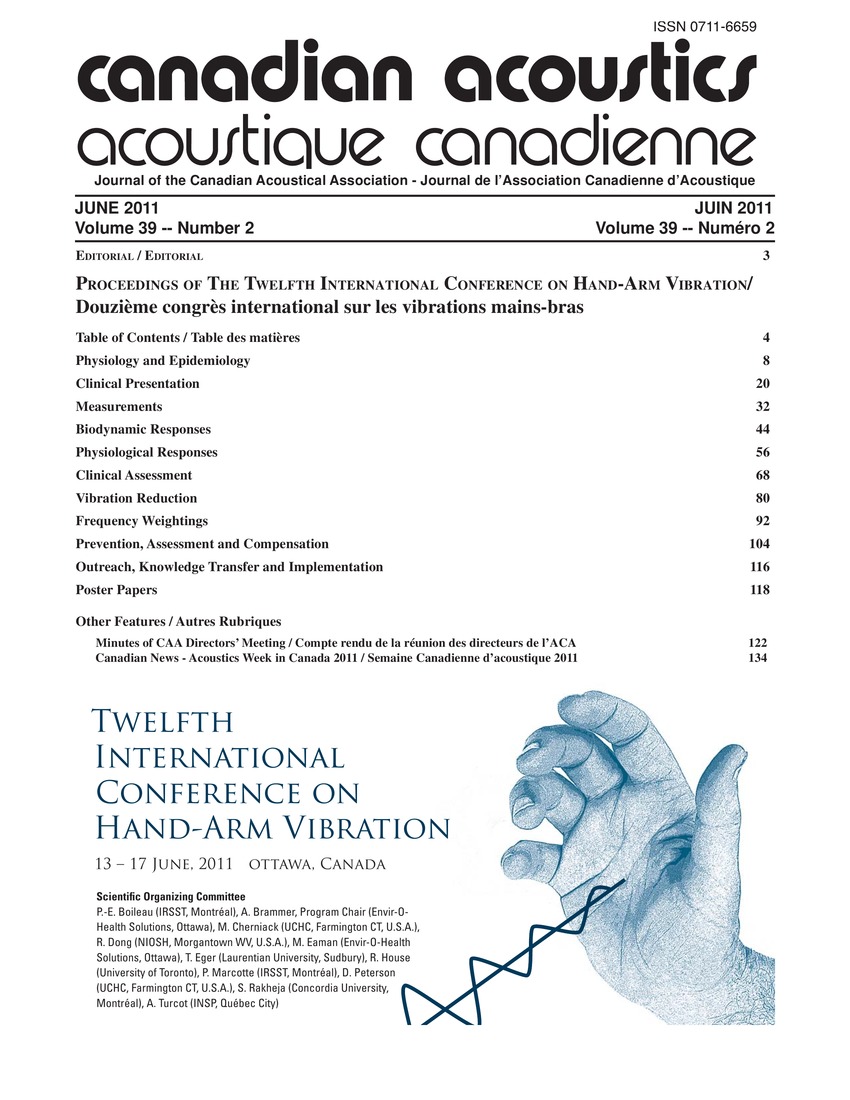Fundamental study of vibrotactile perception threshold on japanesevibrotactile perception thresholds using new measurement equipment
Keywords:
Index finger, Lower frequencies, Measurement equipment, Office workers, Perception thresholds, Reference data, Standard deviation, Stimulus frequency, Vibrotactile perception thresholdAbstract
The vibrotactile perception threshold (VPT) of healthy Japanese with new equipment developed according to ISO 13091-1 was studied and the results wee compared with the ISO 1309 1-2:2003 reference data. The subjects were 30 males and 17 females aged 22 to 40 years, healthy Japanese office workers, who do not have a history of undue exposure to vibration. The VPTs of index fingers and middle fingers of right-hands were measured for 9 stimulus frequencies such as 3.15, 4, 5, 20, 25, 31.5, 100, 125, and 160 Hz. 2.5, 15, 50, 85 and 97.5 percentiles of the VPT levels of the male and the female subjects are observed. Mean and standard deviation (SD) of the VPT levels for index fingers and middle fingers of the male and the female subjects show significant differences at the 5 % significance level between the males and the females are measured only for some lower frequencies.Additional Files
Published
How to Cite
Issue
Section
License
Author Licensing Addendum
This Licensing Addendum ("Addendum") is entered into between the undersigned Author(s) and Canadian Acoustics journal published by the Canadian Acoustical Association (hereinafter referred to as the "Publisher"). The Author(s) and the Publisher agree as follows:
-
Retained Rights: The Author(s) retain(s) the following rights:
- The right to reproduce, distribute, and publicly display the Work on the Author's personal website or the website of the Author's institution.
- The right to use the Work in the Author's teaching activities and presentations.
- The right to include the Work in a compilation for the Author's personal use, not for sale.
-
Grant of License: The Author(s) grant(s) to the Publisher a worldwide exclusive license to publish, reproduce, distribute, and display the Work in Canadian Acoustics and any other formats and media deemed appropriate by the Publisher.
-
Attribution: The Publisher agrees to include proper attribution to the Author(s) in all publications and reproductions of the Work.
-
No Conflict: This Addendum is intended to be in harmony with, and not in conflict with, the terms and conditions of the original agreement entered into between the Author(s) and the Publisher.
-
Copyright Clause: Copyright on articles is held by the Author(s). The corresponding Author has the right to grant on behalf of all Authors and does grant on behalf of all Authors, a worldwide exclusive license to the Publisher and its licensees in perpetuity, in all forms, formats, and media (whether known now or created in the future), including but not limited to the rights to publish, reproduce, distribute, display, store, translate, create adaptations, reprints, include within collections, and create summaries, extracts, and/or abstracts of the Contribution.


